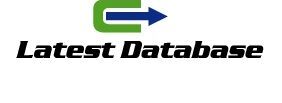Excel remains one of the most accessible and versatile tools for managing phone number data, especially for small to medium-sized datasets. While it lacks the advanced validation capabilities of specialized software or APIs, with the right formulas, data validation rules, and conditional formatting, Excel can effectively help you identify and correct common errors in phone number lists. The first step to validating phone numbers in Excel is to standardize the format. Since users often enter phone numbers in a variety of inconsistent ways
— with spaces, dashes, parentheses, or country codes — you can use Excel functions like SUBSTITUTE to remove unwanted characters. For example, leans spaces, dashes, and parentheses out of the string. This cleanup simplifies subsequent validation steps. You can then use LEN to check for proper length or ISNUMBER combined with VALUE to ensure the phone number contains only digits (once cleaned). Creating a helper column to hold cleaned numbers helps keep your data organized and makes validation easier.
To catch invalid or incorrectly formatted phone numbers
Excel’s Data Validation feature is powerful. You bosnia and herzegovina phone number list can set rules that restrict entries to certain lengths or patterns. For instance, if you know all your phone numbers should be exactly 10 digits long (such as US numbers without country code), you can configure data validation to reject any input not meeting this length. To handle more complex formats, Excel what is the purpose of account-based marketing allows custom formulas in data validation, such as using =AND(ISNUMBER(A2),LEN(A2)=10) which ensures that only 10-digit numeric entries are accepted. Conditional formatting is another great way to highlight potential problems visually—e.g., flagging numbers that don’t match your fax marketing expected length or contain invalid characters. You can create rules to color-code cells based on length, presence of letters, or patterns, making it easier to scan large datasets and quickly pinpoint issues.
While Excel is useful for initial validation and cleanup,
it has limitations—especially for international phone numbers or advanced verification needs. For example, Excel cannot validate whether a phone number is real, active, or properly assigned to a country or carrier. To enhance accuracy, consider integrating Excel with third-party services via Power Query or VBA macros that call phone
validation APIs. Alternatively, export your cleaned Excel data into specialized validation tools or platforms for bulk verification. Nonetheless,
Excel is an excellent starting point for many businesses and analysts due to its accessibility and flexibility. With careful formula design and validation rule implementation, you can maintain a higher-quality phone number dataset, reduce errors in campaigns, and ensure smoother communication workflows.






